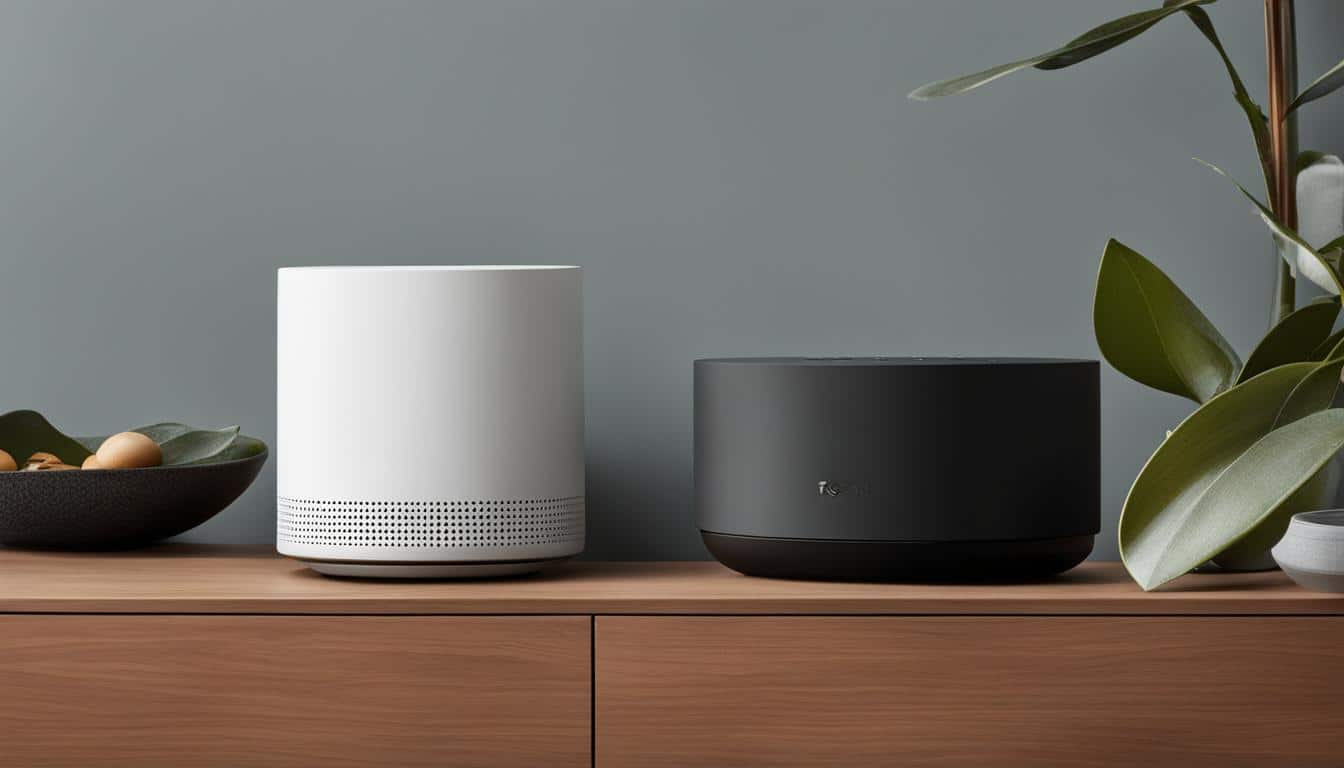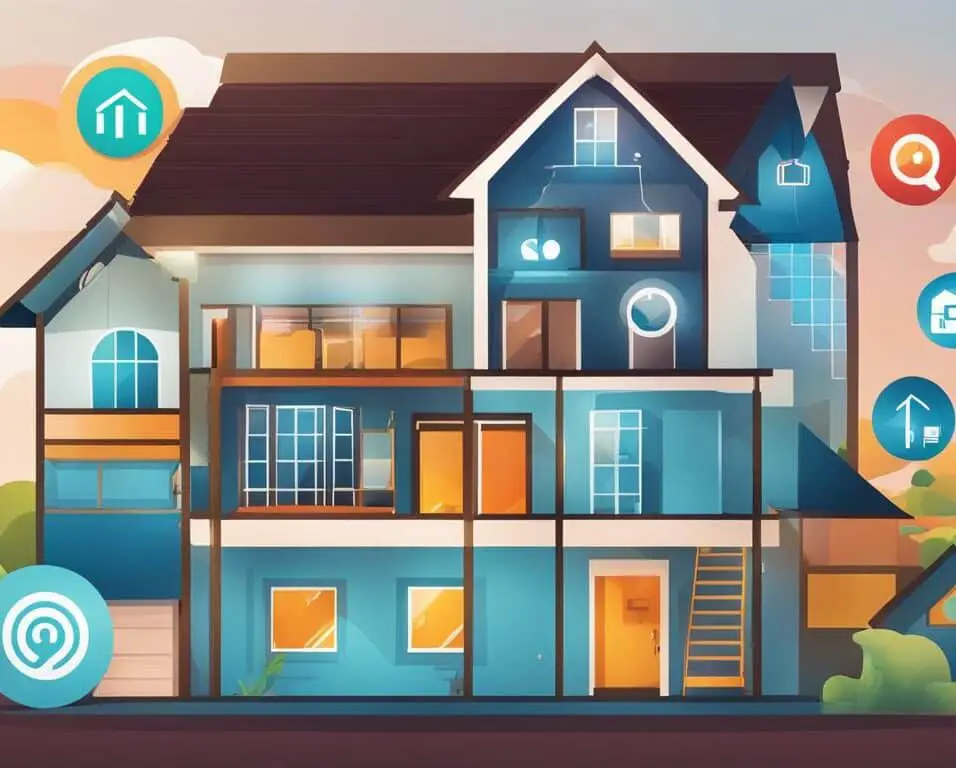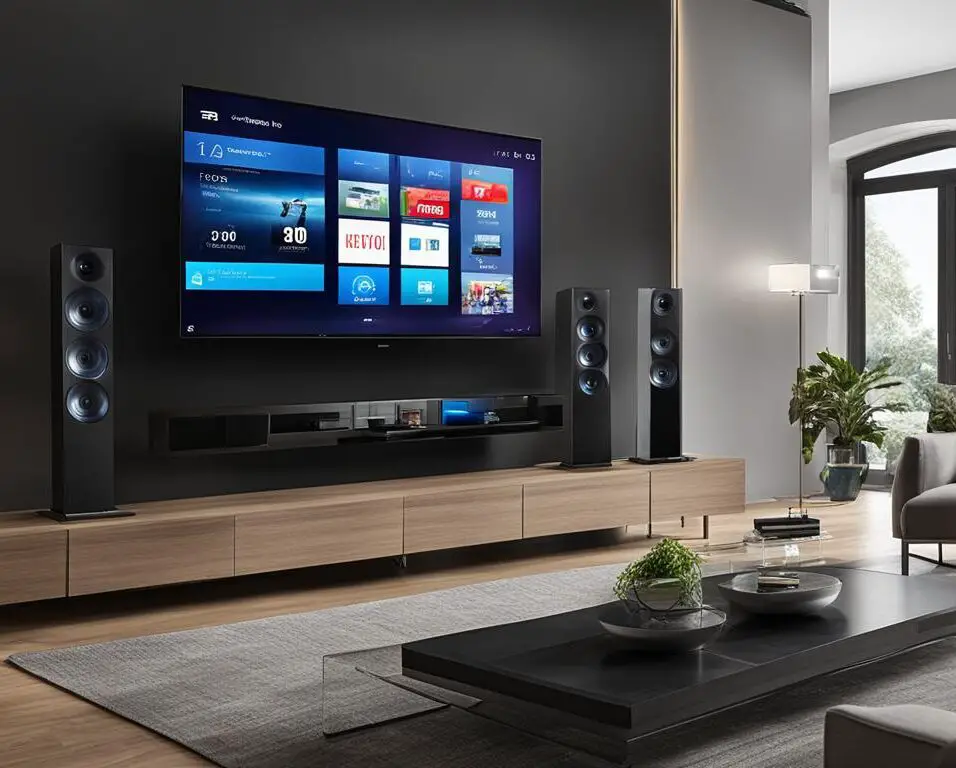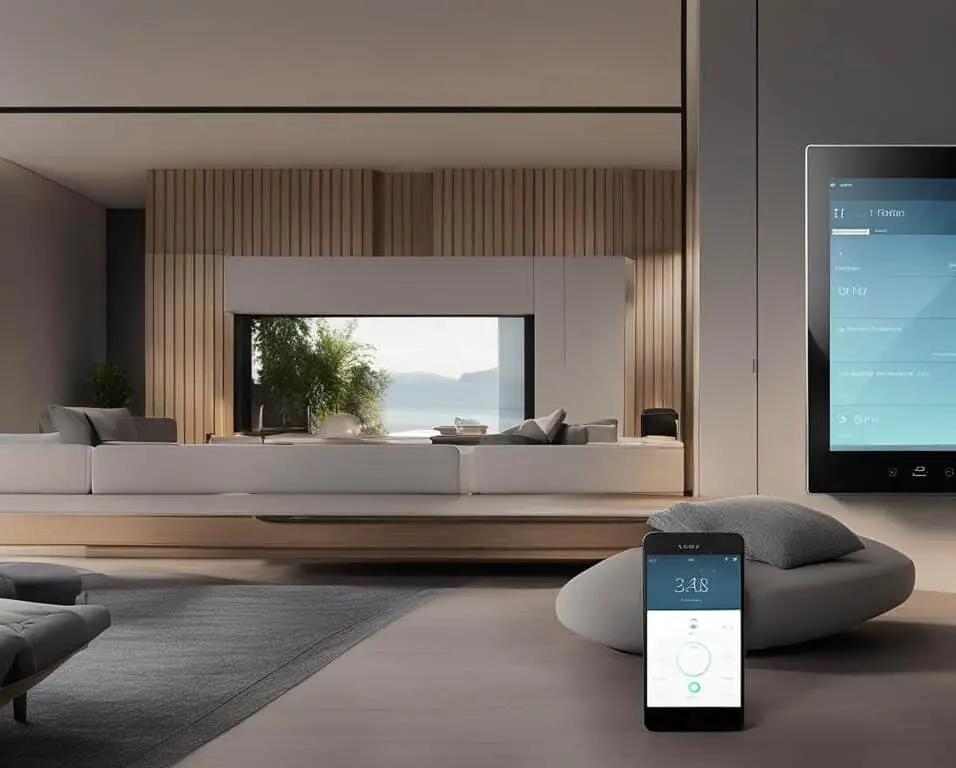Building a Smart Home: Where to Start
Building a smart home can be an exciting yet overwhelming task. With the abundance of ecosystems, devices, and standards available, it’s essential to know where to begin. In this article, I will guide you through the process of starting a smart home build, from choosing the right ecosystem to understanding essential technologies and devices.
Key Takeaways:
- Starting a smart home build requires careful consideration of ecosystems and device compatibility.
- Choose an ecosystem that suits your needs, such as Google Home, Amazon Alexa, or Apple HomeKit.
- Understand the difference between 2.4 GHz and 5 GHz frequencies for Wi-Fi compatibility.
- Smart hubs and speakers can serve as central control points for your smart home devices.
- Security should be a priority when setting up a smart home.
Choosing the Right Smart Home Devices
When it comes to building a smart home, choosing the right devices is essential. Whether you’re starting small or going all-in, there are a variety of options to consider. From smart lighting to security cameras, each device plays a unique role in creating a truly connected home.
Smart Lighting
Smart lighting is often a popular entry point for smart home enthusiasts. With options ranging from Wi-Fi connected bulbs to those using Zigbee or Z-Wave radios, there is a solution for every preference. These bulbs can be controlled directly from your smartphone, allowing you to adjust the brightness, color, and even schedule lighting scenes for different moods or activities.
Smart Switches and Plugs
If you don’t want to replace your existing light fixtures, smart switches and plugs offer a great alternative. Smart switches can replace traditional wall switches and give you control over your lights from anywhere. On the other hand, smart plugs can transform ordinary devices into smart ones, allowing you to turn them on or off remotely. Both options provide convenience and energy efficiency.
Smart Thermostats and Security Devices
Smart thermostats go beyond just controlling your home’s temperature. They can learn your habits, adjust the temperature based on occupancy, and even integrate with other smart devices for a truly connected experience. Security devices like smart locks, doorbells, and cameras provide added peace of mind. You can monitor your home from anywhere and receive alerts in case of any unusual activity.
Additionally, smart speakers and soundbars with integrated voice assistants can act as a central control point for all your smart devices. With just a few voice commands, you can adjust the lighting, temperature, and even play your favorite music or podcasts.
Table: Comparison of Smart Home Devices
| Device | Features | Benefits |
|---|---|---|
| Smart Lighting | Controllable brightness and color, scheduling options | Create ambiance, energy efficiency |
| Smart Switches and Plugs | Remote control, energy monitoring | Convenience, energy savings |
| Smart Thermostats | Learning capabilities, integration with other devices | Comfort, energy efficiency |
| Security Devices | Remote monitoring, alerts | Peace of mind, enhanced security |
| Smart Speakers and Soundbars | Voice control, entertainment integration | Easy control, immersive experience |
As you consider building your smart home system, take the time to research and choose the devices that best fit your needs and lifestyle. Each device brings its own unique benefits and can be integrated into a cohesive and efficient smart home ecosystem.

Building a Hub-Free Smart Home System
Building a hub-free smart home system is an excellent option for those who want to create a cost-effective and versatile setup. By utilizing smart bulbs, switches, plugs, speakers, thermostats, security cameras, irrigation systems, and IFTTT, you can achieve a seamless and integrated smart home experience without the need for a central hub.
Smart bulbs that communicate directly over Wi-Fi or Bluetooth allow you to control your lighting directly through smartphone apps, providing convenience and flexibility. Similarly, smart switches and dimmers that operate on Wi-Fi offer easy control over existing light fixtures without requiring a hub.
With smart plugs, you can transform ordinary devices into smart ones that can be controlled remotely using smartphone apps and scheduling. This feature provides added convenience and energy efficiency to your home.
Smart speakers with voice assistants, such as Amazon Echo or Google Home, can act as virtual hubs, allowing you to control various smart home devices through voice commands. Additionally, smart thermostats, security cameras, and irrigation systems can be controlled directly through smartphone apps, eliminating the need for a central hub.
Moreover, IFTTT (If This Then That) serves as a powerful tool for automation and integration. By connecting different smart home devices and services, you can create customized routines and commands without relying on a hub.
To ensure a reliable and robust hub-free smart home system, it’s crucial to have a strong wireless router that can provide stable connectivity throughout your home.
FAQ
Where should I start when building a smart home?
To start building a smart home, it is important to choose an ecosystem that suits your needs, such as Google Home, Amazon Alexa, or Apple HomeKit. Consider the compatibility of devices with your chosen ecosystem and the level of support they offer.
Do I need Wi-Fi for my smart home devices?
Yes, Wi-Fi is essential for most smart home devices. It is important to understand the difference between 2.4 GHz and 5 GHz frequencies and ensure that your devices are compatible with your Wi-Fi network.
How can I control my smart home devices?
Smart hubs and smart speakers can serve as the central control point for your smart home devices. You can also control many devices through smartphone apps or voice commands.
How can I ensure the security of my smart home?
Security should be a priority when setting up a smart home. Choose a strong Wi-Fi password and consider connecting your devices to a separate network. Regularly update the firmware of your devices and follow best practices for securing your home network.
What are some popular smart home devices to start with?
Smart lighting is a popular starting point for a smart home, with options ranging from Wi-Fi connected bulbs to bulbs using Zigbee or Z-Wave radios. Smart switches, dimmers, plugs, thermostats, security cameras, and speakers are also commonly used in smart homes.
Can I build a hub-free smart home system?
Yes, building a hub-free smart home system is a cost-effective option for those who don’t want to invest in a central hub. Smart bulbs that communicate over Wi-Fi or Bluetooth, smart switches and dimmers that operate on Wi-Fi, and smart plugs can be controlled directly via smartphone apps.
How can I connect and integrate different smart home devices and services without a hub?
IFTTT (If This Then That) can connect different smart home devices and services, providing automation and integration without a hub. It allows you to create customized rules and actions based on triggers from your smart home devices.
What kind of Wi-Fi setup do I need for a hub-free smart home system?
A strong wireless router is essential for a hub-free smart home system to ensure reliable connectivity. Make sure your Wi-Fi network covers your entire home and consider using mesh Wi-Fi systems for extended coverage.








